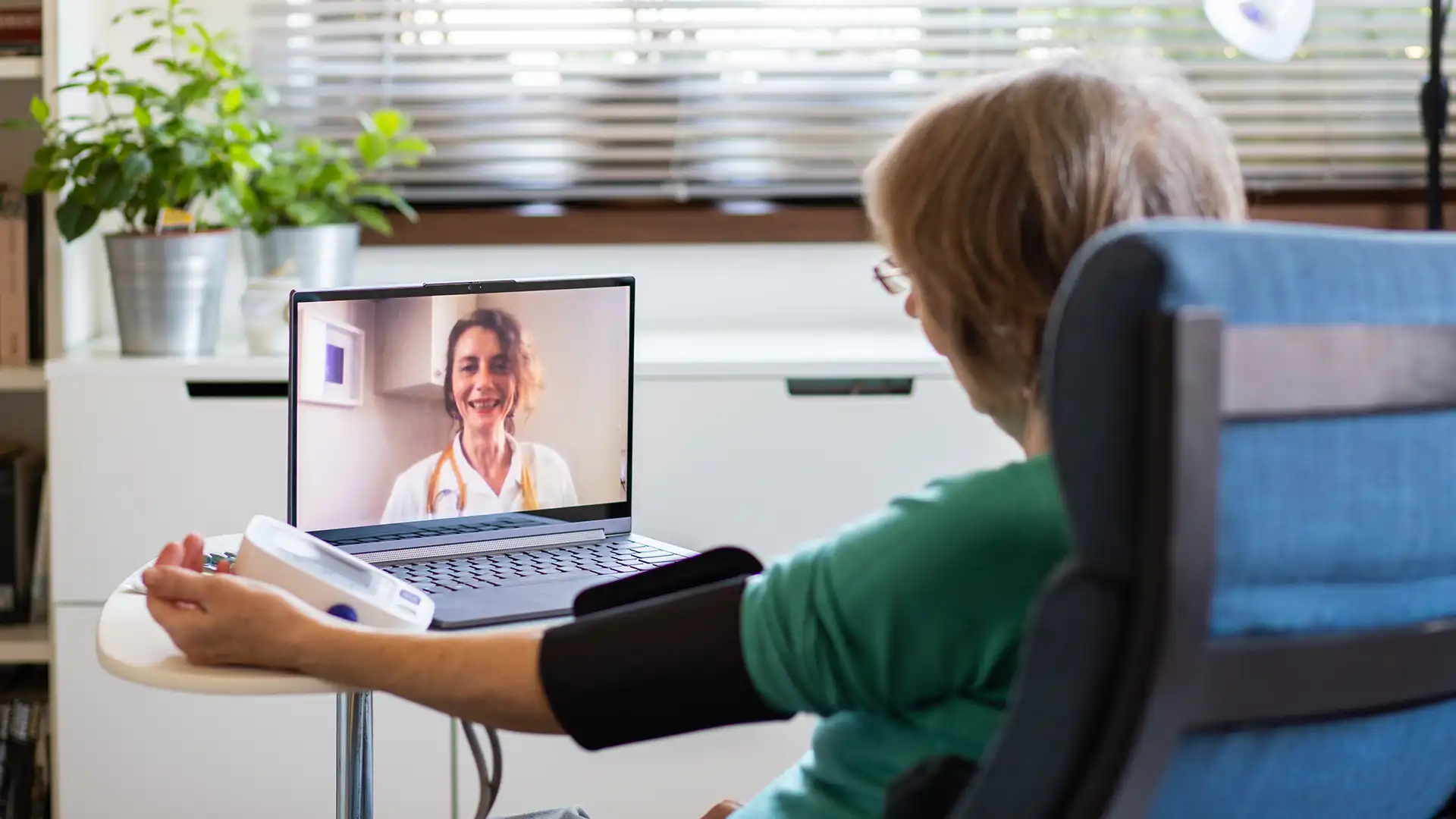Telehealth is no longer the future; it’s the present. According to a 2024 report by McKinsey & Company, more than 60% of patients in the U.S. have used telehealth services, and satisfaction rates continue to rise. As virtual care tools become more advanced and accessible, the responsibility is shifting to patients to come prepared. That means knowing what to ask.
Whether you’re logging into a virtual primary care appointment or urgently connecting with a provider for an acute concern, asking the right questions can dramatically improve the quality of your care. Many patients still feel unsure about how to navigate a digital health visit, but with preparation, you can turn your virtual appointment into a productive, personalized experience.
This guide will walk you through the top questions to ask during a telehealth visit, helping you gain clarity, advocate for yourself, and get the most out of every session.
What Is a Telehealth Visit?
Before diving into what to ask your provider, it’s essential to understand what a digital health visit is and how it works. A digital health visit is a medical consultation that takes place remotely, usually via a secure video call, phone, or even text messaging, using a telehealth website or app. Instead of traveling to a clinic, hospital, or doctor’s office, patients can now connect with licensed healthcare providers from the comfort of their own homes.
This type of virtual care gained popularity during the COVID-19 pandemic and has since become a permanent part of the healthcare system. In fact, a 2024 report by the American Medical Association noted that nearly 75% of healthcare providers now offer some form of telehealth services, particularly in primary care, behavioral health, dermatology, and chronic disease management.
What Happens During a Digital Health Visit?
A telehealth appointment functions much like a regular in-person visit. You’ll check in through a link or app, wait briefly in a virtual queue, and then speak directly with a provider. Depending on the purpose of the visit, your provider may ask you to describe your symptoms, show areas of concern, review your medication list, or discuss your health history.
They may also share screens to show lab results, discuss care plans, or send prescriptions to your pharmacy, all without requiring you to visit a clinic.
Common Uses for Telehealth
Digital health visits are suitable for a wide range of medical needs. Some of the most common include:
- Routine checkups – General wellness visits, follow-ups for stable chronic conditions, and health screenings.
- Prescription refills – Quick consultations to renew medications without needing to see your doctor in person.
- Mental health counseling – Therapy sessions or psychiatric evaluations from the privacy of your home.
- Skin conditions – Diagnosis and management of rashes, acne, eczema, or suspicious moles via camera.
- Cold, flu, or COVID-19 symptoms – Evaluation of mild to moderate symptoms with advice on care and testing.
- Follow-ups for chronic conditions – Ongoing care for issues like diabetes, high blood pressure, or asthma.
Some Instant care telehealth sessions also allow for same-day or after-hours care for minor illnesses and injuries such as urinary tract infections, pink eye, sinus infections, or back pain.
Different Types of Digital Health Visits
There are several types of virtual care tools catering to different healthcare needs:
- Primary Care Telehealth Visit – For general health maintenance, checkups, and non-emergency concerns.
- Instant Care Telehealth Session – For sudden, non-life-threatening issues that require prompt attention.
- Specialist telehealth – Includes virtual visits with dermatologists, mental health professionals, cardiologists, and more.
- Remote patient monitoring involves tracking health data (such as blood sugar or blood pressure) remotely and sending it to your healthcare provider.
- Store-and-forward telehealth – You upload medical data or images that a specialist reviews later.
Why Knowing This Matters
Understanding the scope and limits of your telemedicine appointment sets you up for success. If you go in for a visit expecting a physical exam, you may be disappointed. But if you know your provider can still offer advice, send prescriptions, or order labs, you’ll be more confident and more likely to ask the right questions.
Being familiar with your provider’s telehealth website or app also ensures you won’t waste time troubleshooting tech during the visit. Additionally, knowing what services your provider offers remotely can help you decide whether a digital health visit is the right choice or if you need to be seen in person.
Questions to Ask Before Your Digital Health Visit
Getting ready for a digital health appointment is just as important as the visit itself. By asking a few key questions ahead of time about technology, privacy, and what to expect. You can avoid disruptions and make sure your virtual session runs smoothly.
What technology do I need to bring to this appointment?
Different telehealth platforms have different requirements. Some may require you to download an app, while others can be accessed directly through a web browser. Ask if your device, internet speed, camera, or microphone are sufficient ahead of time.
Is this visit secure and private?
HIPAA compliance matters. Verify that the platform being used meets the required standards for privacy and security. Many providers list this on their online medical platform, but it’s always good to ask directly.
Will I be speaking with a doctor, nurse practitioner, or another provider?
Clarify who you’ll be meeting with, especially during a virtual primary care appointment. It helps you prepare the appropriate questions depending on the provider’s role.
Questions to Ask During Your Digital Health Visit
Once your session begins, the right questions help guide the conversation and ensure your concerns are fully addressed. Asking clearly and specifically allows your provider to give you tailored advice and actionable next steps.
What treatment options are available for me?
Inquire about all possible treatment options, including home care, prescription medications, and the necessity of in-person follow-up. If your provider recommends medication, ask:
- What does this medication do?
- What are the side effects?
- Are there alternatives?
Do I need any lab work or imaging?
Even during a digital health visit, your provider may recommend laboratory tests, X-rays, or other diagnostic tests. Ask:
- Where can I get these done?
- Will I need a referral?
- How will results be shared?
When should I follow up?
Ensure you leave the session with a clear understanding of the next step. Should you book another telemedicine appointment, schedule an in-person visit, or wait for a call? Having a timeline reduces confusion later.
What should I do if my symptoms worsen?
Especially during an urgent care telehealth visit, it is crucial to be aware of the key red flags to watch for. Ask:
- When should I go to an ER or urgent care?
- What are the signs that require immediate attention?
Additional Smart Questions Patients Often Forget
Beyond the basics, there are important questions that can make your care more complete but are easy to overlook. Bringing these up can give you clearer guidance and help you get the most value from your digital health visit.
Can you send me a summary of our visit?
Many platforms automatically generate a visit summary, but don’t assume—ask. Having a summary helps you remember what was discussed, especially if you’re managing multiple conditions.
Are there tools or apps you recommend?
Some providers may suggest health tracking apps, digital blood pressure monitors, or symptom diaries. These can help you monitor your condition between visits.
Can I message you later with follow-up questions?
Some virtual care tools include a messaging feature or portal access. Ask if it’s okay to send follow-up questions and how long you should expect to wait for a response.
Benefits of Preparing Questions Ahead of Time
Asking questions may seem basic, but it’s a powerful tool. Prepared patients are empowered patients. The benefits of telehealth, including convenience, speed, and access, only work when communication is strong.
Studies have shown that patients who ask questions are more likely to follow treatment plans and report higher satisfaction. It also helps reduce the chances of misdiagnosis or confusion about next steps.
Conclusion
A telehealth visit should never feel like a rushed video call. It’s your time to get answers, understand your health better, and create a clear plan with your provider. Whether you’re managing a chronic condition, seeking urgent care, or checking in for a routine concern, coming prepared with thoughtful questions can transform the quality of your care.
Take a few minutes before each telemedicine appointment to write down your concerns and questions. Don’t be shy about asking for clarification, and if something doesn’t make sense, speak up—your health is too important to leave to guesswork. Try our telehealth service today and book your appointment to get expert guidance from the comfort of your home.
Frequently Asked Questions (FAQs)
How do I prepare my home environment for a digital health visit?
Select a quiet, well-lit space with minimal background noise, allowing your provider to see and hear you clearly. Keep essential items nearby, such as medications, recent test results, or devices like a thermometer. This preparation ensures a smoother visit and helps your provider give more accurate advice.
Can I include a family member in my digital health visit?
Yes, many providers encourage family participation, especially if the patient needs support remembering details or discussing treatment options. Most platforms allow multiple participants to join securely and safely. Having a trusted person present can also provide emotional support and help clarify any questions that may arise after the appointment.
What happens if the internet connection drops during my digital health visit?
Most providers have a backup plan, such as switching to a phone call or rescheduling the video portion of the appointment. It’s a good idea to confirm these options at the start of the session. Keeping your device charged and close to a reliable Wi-Fi source minimizes disruptions.



